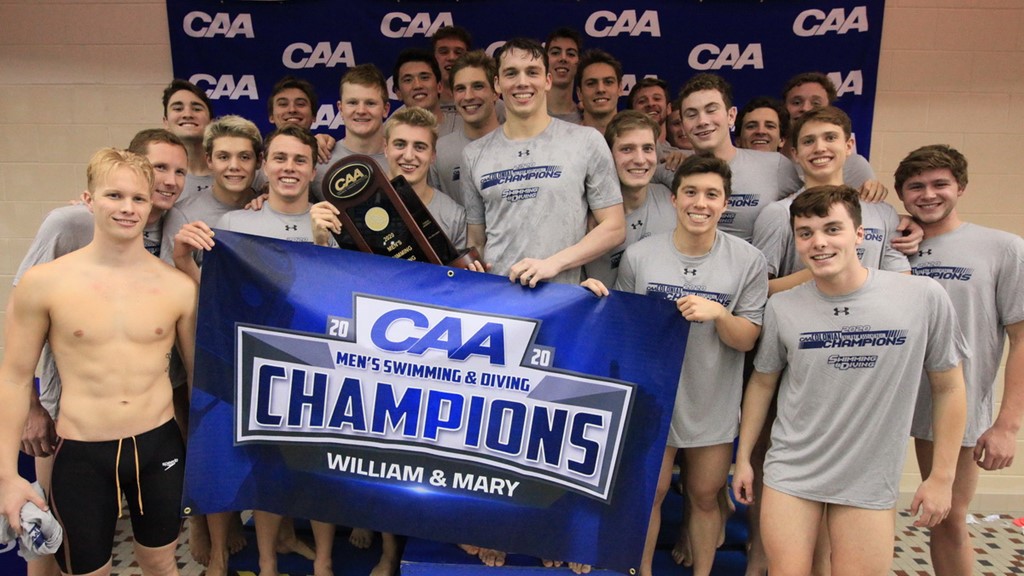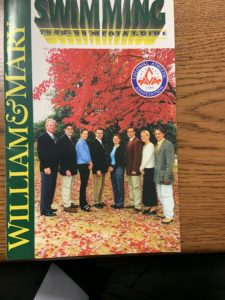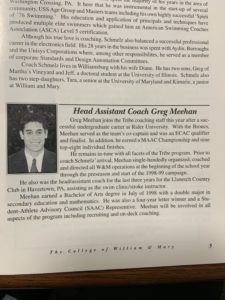When senior Colin Wright qualified for the 2020 NCAA Men’s Swimming & Diving Championships via an 18.98 in the 50 free and a 42.01 in the 100 free, he became the first swimmer from his school to qualify for the NCAA Championship meet since 1986.
And barring an unexpected reprieve, Wright may be the last-ever NCAA Championship qualifier from his school after the university announced on Thursday that it would cut its swimming & diving programs, along with 5 other sports, as part of cost-savings measures.
Wright’s swim, especially in the 50 free, that made him just the 4th swimmer from a mid-major school to go sub-19 in the 50 yard free, is an obvious casualty of the loss of mid-major programs. His was one of the best stories of the 2019-2020 NCAA season, even though it was ultimately cut short by the onrushing coronavirus pandemic.
But, as current University of Texas assistant and former USA Swimming National Junior Team coach Mitch Dalton pointed out on Twitter on Thursday, the most significant role that mid-majors play in our swimming infrastructure might not be the swims they produce directly, but rather the people they produce directly.
This! 😤😔
Besides the immediate impact on these SAs – lets look at this ripple on international swimming. The USA is the greatest swimming power in the world. There are many examples of our national team being impacted by people from mid-majors.
Here are a few: (a thread). https://t.co/j8WaD6bScJ
— Mitch Dalton (@MitchDaltonNJT) September 3, 2020
In the thread, Dalton points out that two of the country’s hottest coaches, Greg Meehan and Tyler Fenwick, might not be where they are without the opportunities afforded to them at William & Mary.
Meehan is the head coach of the women’s program at Stanford, where the Cardinal are the 3-time defending NCAA Division I champions.
Meehan took his first coaching job out of college at William & Mary as an assistant, eventually being promoted to interim head coach. He then moved on to Princeton, UCLA, Pacific, Cal, and finally his current positions both at Stanford and the 2020 US Olympic Women’s Swimming Head Coach.
He also swam at a mid-major program, Rider University.
Fenwick, the current associate head coach at the University of Virginia, swam at William & Mary. The University of Virginia was seeded to score the most points at the 2020 NCAA Championships before the coronavirus pandemic canceled that meet.
With the loss of mid-major programs, we could see the loss of opportunities for swimmers who aren’t on the Olympic track coming out of high school to build careers in the sport. This is not to say either Meehan or Fenwick couldn’t have become great coaches without William & Mary, but it was a stepping-stone opportunity that allowed them to remain engaged in the sport for longer while they learned and found their lifelong passions for sport.
Others to come out of the William & Mary program include Minnesota associate head coach Jesse Moore, whose 2nd coaching appointment was at William & Mary from 2010 through 2012. Current South Carolina head coach McGee Moody got his first head coaching position at William & Mary from 2004-2007 (and also his first college position, period, at East Carolina, which was also cut this offseason). Current Princeton head men’s coach Matt Crispino made his last stop prior to the Ivy League at William & Mary, where he was the head coach for 12 seasons – also his first head coaching position. Former Virginia Tech head coach Ned Skinner was at William & Mary in the 90s; Missouri assistant Chris Carter and Tennessee’s top recruiter Josh Huger both cut their teeth with the Tribe.
UNC Wilmington is another proud example. The program, which was very-nearly cut a decade ago, produced both Virginia head coach Todd DeSorbo and UNC Wilmington’s new head coach Bobby Guntoro. DeSorbo also served as a coach at UNCW, and Guntoro, after graduation, worked his way onto the staff at NC State, where he was a big part of the success in the sprint group that built that program into a national superpower.
Dalton even interjects his own story into the thread, where he was a walk-on swimmer at James Madison University.
The strength of American swimming is its depth: the huge number of clubs and pools available, and the number of opportunities for athletes to continue training into adulthood. While the stories of swimmers from these smaller school programs making an international impact for American swimming are rare (though not totally absent, with examples like Claire Donahue from Western Kentucky and Andrew Wilson from Emory being two prominent recent examples), the loss of these programs hits deeper than that.
The loss of these programs are the loss of opportunities. It’s a lost chance for young swimmers to become peer-leaders of mid-major programs that eventually become coach-leaders for the next generation of athletes. It’s a lost chance for a swimmer who doesn’t have quite the physical gifts needed to be a swimming superstar, but still has the drive and work-ethic, to maximize their potential and find a path to keep their skills in the sport.
The loss of programs might not show up right away. Swimming doesn’t necessarily provide the same level of social mobility that football or basketball does; most swimmers who would have swum at William & Mary will probably get college educations anyway – either there, or somewhere else.
But in the long-term, the loss of opportunities will undercut the base-level incubators for talent in the sport of swimming.
Yes, let’s save the Iowa and the UCLAs and the Oregon States and the Clemsons of the world. But, if we want American swimming to continue to be what it is, we also need to save the East Carolinas, UNC Wilmingtons, UConns, James Madisons, and William & Marys, too.



Do you think with all the cut programs at the D1 level, the top D2 and D3 programs will start seeing a trickle down of speed?
Revise and resubmit
Let’s work together to try and save this incredibly valuable program!
Great article, thank you Braden (and Mitch Dalton). I’m similarly afraid for our swim clubs. Even many of the financially stable clubs are having a tough time making it through this pandemic (let alone those that were already just scraping by). Hopefully it will be a temporary setback for the sport, swimmers are nothing if not resilient.
ECU interim chancellor and new AD made a permanent decision for a temporary problem. We need more forward thinking administrators. 66 year tradition at ECU, 2 national titles, 21 conference championships and 47 All Americans. According to administrators, it just wasn’t good enough and not worth saving. Shame on them.
I spent four years getting either out touched, or obliterated by Colin Wright. W&M had an outstanding program, and was the pinnacle of excellence in our conference. I can’t imagine going through college without W&M to chase. This is heartbreaking for our conference and for Mid-Major Swimming.
F athletic departments that refuse to support olympic sports and F the C-Virus
Also, how many kids stick at it age 14/15 because they think swimming can help them go to college somewhere like William & Mary, then have a sudden improvement in Junior/Senior year and go to D1, national team etc? Particularly on the men’s side, can’t be that unheard of.
That was my swimmer. Wasn’t swimming college after junior year HS, went mid major D1 after a great fall/winter senior year.
Thank you Braden. This could not be more perfectly put. As one of my former teammates said yesterday, “I would not be who I am today without my experience as a William and Mary Swimmer”. And, as you said, It’s not just the immediate experiences of current athletes being lost here. It’s their impact on thousands at all levels across the sport.
My mid major swimming experience profoundly affected my life. I was a walk on participant who learned how to be, as you put it so well, “ a peer leader”. I run a swim school at which thousands of children have learned to swim. I coach age group swimming where I have worked with hundreds of young people,… Read more »
Perfectly stated as well! Let’s continue the fight to keep this valuable program up and running!
Coley Stickers had his first coaching job at Dartmouth. Not sure he enjoyed the Hanover winter, but he’s clearly gone on to be a successful NCAA coach.
Please also don’t forget the positive impact that these programs have on student athletes who go on to careers in completely different fields. It’s not all about feeding the Olympic program.